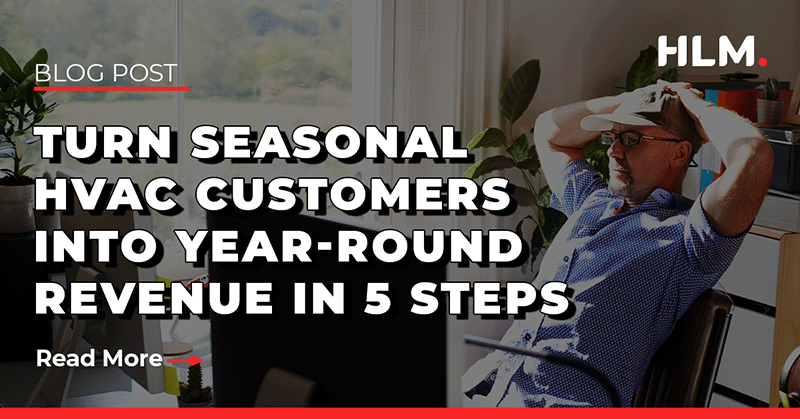By Nathan Yates
Aug 8, 2023 4:03:00 PM

I recently attended the American Marketing Association’s January Luncheon. It’s no coincidence that High Level Marketing’s very own Scott Bell, Founder and CEO, was the guest speaker of the event.
The theme of the discussion was to outline the process and metrics business owners should be thinking about when trying to determine how much to invest in sales and marketing.
Scott posed several questions that you should be asking:
- How much should you pay to acquire a new customer?
- What's the rate of customers you are losing over time, or churn rate?
- Do you know the lifetime value of your customers?
While this may seem like a complex subject, Scott boiled the concept down into a conversation that was easily followed not only by seasoned VPs, managers, and business owners but by young entry-level marketers as well.

Hope is Not a Strategy
Scott emphasized that hope is not a strategy when it comes to investing in customer acquisition. Simply hoping for a revenue increase won't suffice. Instead, a solid strategy is the key to success.
CEOs, marketing managers, and sales executives could probably all agree that having predictable revenue is the dream. No matter the size or stage of your organization, from a small town bakery to a century-old publicly-traded corporation, you can have the same level of assurance in predicting your annual revenue when you replace hoping for consistency with creating a strategy for predictability.
Customer Acquisition Costs and Customer Lifetime Value
A good strategy starts with the end in mind. The goal is to understand what you’ll get in return for what you invest. A few key metrics will help determine how to drive predictable revenue. According to Scott, the most important metrics to track are actually some of the most basic elements of your business:
- Customer Acquisition Cost (CAC) = sales marketing costs / net new customers
- Lifetime Value of a Customer (LTV) = average revenue per transaction, churn rate and repeat visitor rate
The problem is companies rarely understand how much of their gross revenue they should contribute to sales and marketing efforts.
This ratio is the golden metric: LTV: CAC
After performing some analysis, Scott realized that High Level Marketing was paying around $10,000 to acquire a new customer with a lifetime value of only $25,000, a disappointing ratio with a return of less than 3 to 1 on the investment. It doesn’t take a mathematician to realize that there is no way the company could achieve long-term revenue growth without making some significant changes and tough decisions.
RECALIBRATING GOALS FOR SUCCESS
Scott was faced with a choice to either lower acquisition costs (CAC) or increase customer value (LTV). After considering multiple factors, the decision was made to focus on increasing and improving customer value (LTV).
Here's what he did:
- Increased Internal Training: A better-educated sales team could target and pursue clients who were a better fit for the company.
- Raised Minimum Investment: This led to an increase in overall client spend and moved the team away from acquiring lower-value accounts.
- Invested in a Customer Success Team: Developed a team to manage accounts more successfully to provide a better customer experience and reduce customer churn.
After 18 months of implementing these changes, High Level Marketing was able to improve its LTV: CAC ratio by 5x. This provided more predictability and a true strategy for creating consistent revenue growth.
Industry Leaders
Many business owners don't realize that marketing budgets are not one-size-fits-all. It all depends on what your company is trying to accomplish.
Check out what some of these industry leaders are spending each year on their growth efforts:
- MindBody: 40% of total revenue invested in marketing, 37% revenue growth year over year
- Tableau: 58% of total revenue invested in sales and marketing, 27% revenue growth year over year
- Salesforce: 49% of revenue invested in sales and marketing, 24% revenue growth year over year
- Oracle: 22% of revenue invested in sales and marketing, 2% revenue growth year over year
Wondering how these companies have that much confidence in their sales and marketing? It comes from having a deep understanding of their metrics – CAC and LTV. These are some of the fastest-growing companies in the world and are consistent year-over-year because they take the time to understand the key metrics that affect the growth of their business.
If a company truly wants to improve revenue growth each year, they must have a true understanding of the metrics that really matter. If you are paying close attention to these key metrics, creating a growth strategy can be stress-free and provide more predictability for years to come.
If you're looking to maximize the ROI on your marketing investment and gain a more predictable revenue stream, our team of experts at High Level Marketing can help, contact us today for more information.
Author: Nathan Yates
Contact Us NowRecent Posts
When you're done with this post, check out our other content below for more Digital Marketing expertise
Contact Us Today
Complete the form below and receive a call within minutes.
Need faster results? Call us now at (888) 717-4249




